December 19, 2022
6 Bike Projects We Want in 2023
2022 saw some hopeful steps toward a bike-friendlier New York: the city took on the issue of bike lane quality and chronic blockage by cars and trucks with new bikeway barriers. We saw a renewed aggressiveness in DOT street design in places like Downtown Brooklyn’s Schermerhorn Street and Queens’ 34th Avenue, and the MTA loosened its long freeze on bike access to its bridges.
On the other hand, our new mayor — a cyclist with a police background — still isn’t enforcing parking or traffic laws, and that doesn’t feel great from the point of view of a bike saddle. And the city removed part of a hard-won bike lane on Brooklyn’s 4th Avenue in the name of traffic flow.
What’s ahead in 2023?
Here are some bike advocacy spotlight issues on our radar and wish list:
Bridge access
Could it be another big year for bridges? DOT has said it will convert a lane on the Bronx/Manhattan Washington Bridge and, behind the scenes, we’ve heard the same is finally coming to the Addabbo Bridge in Queens. DOT teased bike lanes on Coney Island’s Cropsey Avenue Bridge in the 2021 Street Master Plan, then didn’t pull the trigger – better luck next year? Will we hear more on the MTA’s intent to deliver a bike-friendly Triboro Bridge? Possible good news late next year: release of concrete plans for separating bike and pedestrian traffic on the Queensboro Bridge.
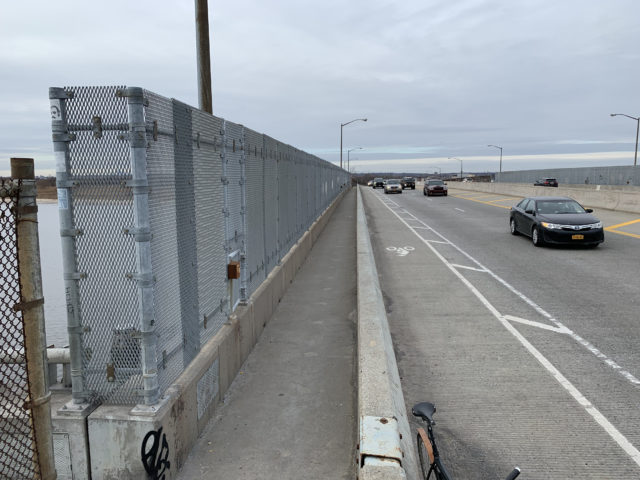
The Addabbo Bridge today – no barriers between bikes and cars!
Brooklyn’s Ashland Place
DOT plans for Brooklyn’s Ashland Place will finally create a protected bike lane corridor that crosses Atlantic Avenue and better connects downtown and the bridges to the rest of the borough, via 4th Avenue. Unfortunately, the 4th Ave bike lane is not great now and will be erased in stages as the city rebuilds the street.
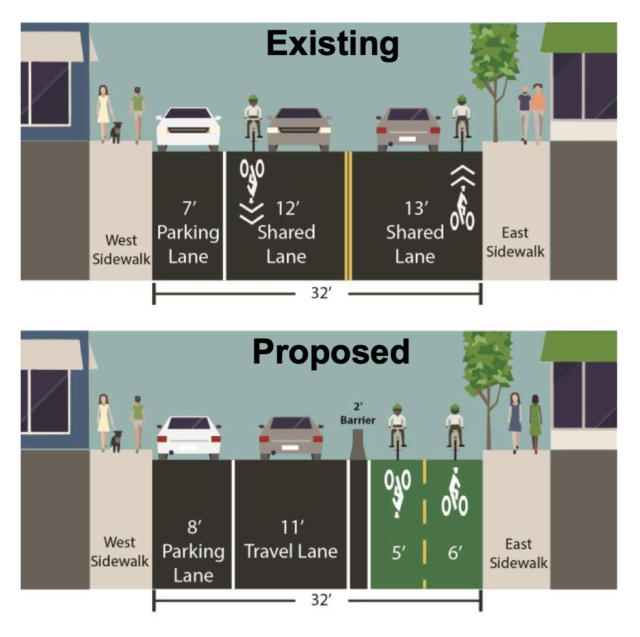
DOT’s plan for Ashland Place
Bike boulevards
We believe the city could do a lot more to create low-traffic connectors (by restricting turns and changing traffic directions) between major greenways and bike lanes that would be better than paint-only bike lanes. The city’s first round of these projects were heavily engineered and triggered the usual protected-lane fights over parking. We’re looking for a lighter, faster and more widespread program here.
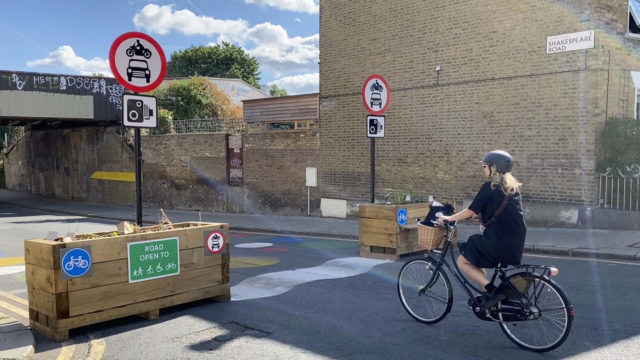
Bike boulevards could be as simple as this.
Door Zones in parking-protected bike lanes
We’re getting some indication that the city is paying close attention to our complaints over incomplete street markings that turn parking-protected bike lanes into door zones. We’ll be paying close attention when the city begins resurfacing streets again next spring.
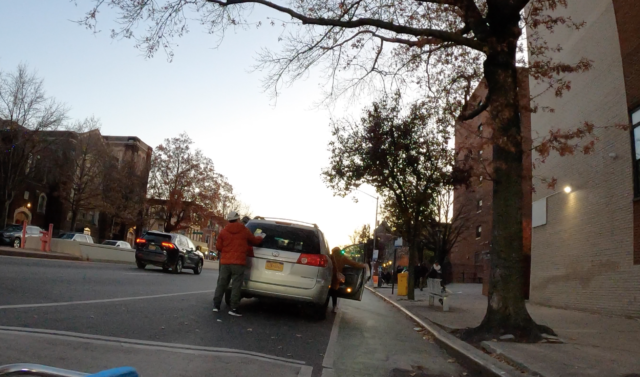
No more of this please–4th Ave protected bike lane is a door zone without a marked buffer zone.
New York City Greenway
On the heels of new greenway funding and planning commitments, we’ll be calling for more upgrades to the city’s legacy greenways. Pelham Parkway ahem!
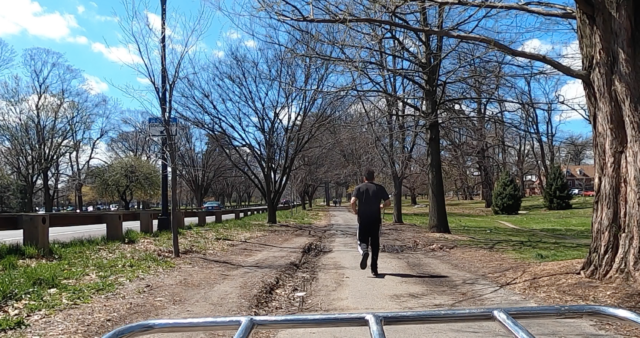
Pelham Parkway–no room for anyone really on dilapidated path.
Improving existing bike lanes
Finally major street reconstructions costing hundreds of millions of public dollars have either not improved existing bikeways (9th Ave and Hudson St in Manhattan) or delivered such weak designs that the lanes are immediately taken over by cars and trucks (Grand Concourse, West St in Greenpoint and Beach 20th St in the Rockaways). We’ll be calling on the city to do better in its next generation of bikeway capital projects.
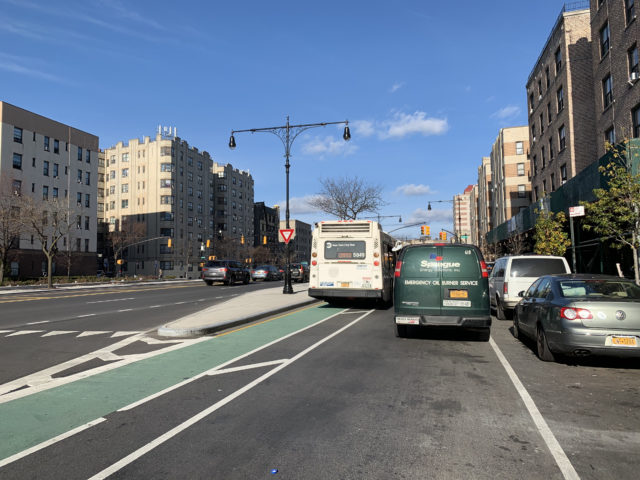
The city spent hundreds of millions rebuilding the Grand Concourse and all we got was a painted bike lane full of motor vehicles.

